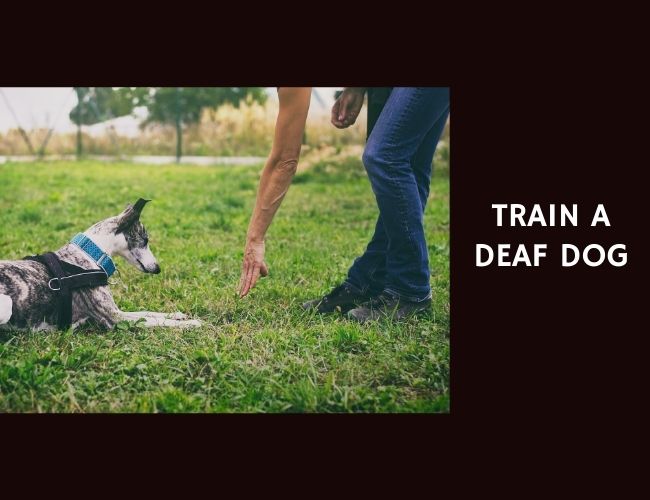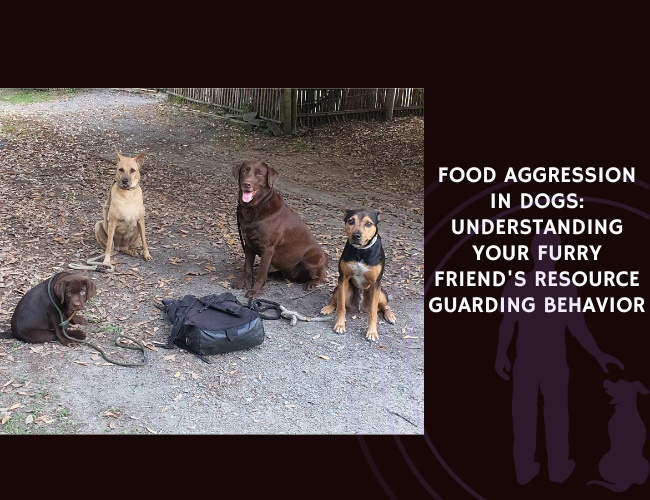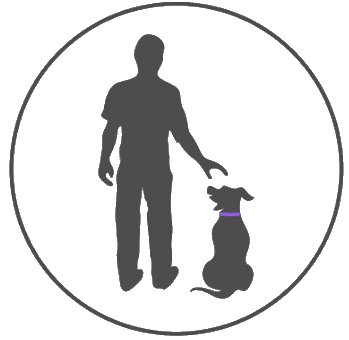Introduction to Canine Cognition
Overview of How Dogs Process Information and Think
Dogs, much like humans, rely on their cognitive abilities to interpret and interact with their surroundings. Canine cognition involves various processes such as perception, thinking, and memory, which allow dogs to make sense of their world and respond accordingly. These processes include sensory input, where dogs use their keen senses of smell, sight, and hearing to gather information. This data is then processed in the brain, involving recognition and interpretation, leading to appropriate behavioral responses.
Dogs have evolved alongside humans for thousands of years, leading to a remarkable ability to understand and respond to human cues. They can interpret facial expressions, body language, and even spoken words to some extent. This understanding helps them navigate their daily interactions and establish strong bonds with their human companions.
Basic Cognitive Capabilities of Dogs
Dogs possess a range of cognitive capabilities that facilitate their learning and problem-solving abilities. These include:
- Object Permanence: The understanding that objects continue to exist even when they are out of sight. This capability is essential for tracking hidden items or following the movement of a toy.
- Categorization: Dogs can categorize objects, people, and other animals, which helps them differentiate between familiar and unfamiliar entities and determine appropriate behaviors.
- Memory: Dogs have both short-term and long-term memory, allowing them to recall past experiences and learn from them. This memory function plays a crucial role in training and behavior modification.
These basic cognitive skills enable dogs to perform tasks such as finding hidden treats, following commands, and navigating complex environments. Understanding these abilities can help owners tailor their training approaches to better suit their dog’s cognitive strengths.
Importance of Understanding Dog Psychology for Training and Care
Grasping the fundamentals of how dogs think and process information is essential for effective training and overall care. By understanding canine psychology, owners can:
- Develop Effective Training Methods: Knowledge of dog cognition allows owners to create training programs that align with their pet’s natural learning processes. For example, using consistent cues and positive reinforcement ensures that dogs associate desired behaviors with rewards.
- Enhance Communication: By understanding how dogs interpret human signals, owners can improve their non-verbal communication, making it easier for dogs to understand and follow commands.
- Address Behavioral Issues: Recognizing the cognitive reasons behind certain behaviors can aid in addressing issues such as separation anxiety, aggression, or fear. Tailored behavioral interventions can be implemented based on an understanding of the dog’s psychological state.
- Ensure Emotional Well-being: A dog’s cognitive health is closely linked to its emotional well-being. Being aware of how dogs think and perceive their environment helps in providing a stable and enriching life, reducing stress and anxiety.
By appreciating and leveraging canine cognition, owners can foster a deeper bond with their dogs, promote positive behaviors, and ensure a happy and well-adjusted companion.
Continue to apply this knowledge as we delve into the intricate mechanisms through which dogs learn and retain information.
Understanding Dog Learning Mechanisms
Understanding how dogs learn is crucial for effective training and fostering a strong bond between humans and their canine companions. There are three primary ways in which dogs learn: observational learning, operant conditioning, and classical conditioning. Each of these methods taps into different aspects of a dog’s cognitive abilities, allowing them to adapt and thrive in various environments.
Different Types of Learning in Dogs
Dogs, like humans, have various learning mechanisms that they use to interact with and understand their world. These learning modalities play a crucial role in their ability to adapt and thrive in their environments.
Observational Learning
Observational learning is a powerful method by which dogs learn by watching others, whether they’re humans or other dogs. When a dog observes another demonstrating a behavior, it can later mimic that behavior. For example, if a dog sees another dog being rewarded for performing a trick, it may attempt to replicate the trick to get the same reward. This form of learning highlights dogs’ capability to recognize patterns and outcomes associated with certain behaviors.
Social Learning
Social learning is closely related to observational learning but encompasses a broader spectrum of interactions. It’s the process by which dogs learn behaviors and social norms by interacting within their pack or with their human families. This can include understanding social cues, learning appropriate behaviors for different contexts, and developing communication skills. For instance, a dog might learn to respect boundaries or understand submission and dominance cues through social interactions.
Experiential Learning
Experiential learning, often referred to as trial and error learning, occurs when dogs learn from their own direct experiences. When a dog encounters a situation and responds, it learns from the outcomes of its actions. If the result is positive, such as receiving a treat for sitting on command, the dog is likely to repeat the behavior. Conversely, if the outcome is negative, the dog may avoid the action in the future. This method of learning is fundamental for training and behavioral modification.
Role of Memory in Dog Learning
Memory is a critical component of how dogs learn and retain information. Dogs rely on different types of memory systems to process their experiences.
Short-Term Memory
Short-term memory in dogs is utilized for keeping track of recent experiences, such as learning new commands or the sequence of actions in a training session. This type of memory allows dogs to hold information temporarily and is essential for immediate tasks.
Long-Term Memory
Long-term memory is where dogs store more permanent information. It allows them to remember learned behaviors, recognize people and places, and retain experiences that influence their future actions. For instance, a dog may remember the route of its daily walk or the smell of its owner’s favorite shoes. Long-term memory supports the dog’s ability to build a bank of experiences to draw upon in new but similar situations.

How Dogs Process and Retain Information
Understanding how dogs process and retain information helps us better design training programs and caregiving routines that match their cognitive capabilities.
Information Processing
Dogs process information through a combination of their sensory inputs—visual, auditory, olfactory, and tactile senses. Their olfactory sense, in particular, is highly developed and plays a significant role in how they interpret their environment. Dogs use their brains to analyze and integrate these sensory inputs to make sense of their surroundings and make decisions.
Retention Strategies
Retention of information is dependent on several strategies:
- Repetition: Repeating tasks and commands strengthens neural pathways associated with those behaviors, allowing the dog to remember them better.
- Positive Reinforcement: Rewards and positive reinforcement during and after a behavior increase the likelihood of the behavior being retained and repeated.
- Consistency: Consistent cues and training environments help dogs create associations between commands and responses, aiding retention.
By understanding these learning mechanisms, dog owners and trainers can develop more effective training strategies that respect and leverage the natural cognitive abilities of dogs.
As we delve deeper into dog social intelligence and communication, we’ll see how these learning principles apply in interactions with humans and other dogs, further enhancing our understanding of canine behavior and training strategies.
Social Intelligence and Communication
Dog owners often marvel at their pets’ ability to sense and respond to their emotions, but what lies behind this remarkable bonding? Let’s delve into dogs’ social intelligence and communication, exploring how they interpret human gestures, learn through observation, and the pivotal role of non-verbal signals in their training.
Dogs’ Ability to Interpret Human Gestures and Signals
Dogs have an innate ability to understand human gestures and signals, which plays a crucial role in their communication with us. Recognizing simple commands like “sit” or “stay” might seem ordinary, yet it showcases their adeptness at interpreting our cues. When a human points to an object, many dogs will fetch it, indicating their understanding of our intentions. Such comprehension stems from their evolutionary history as cooperative hunters alongside humans, which favored those who could respond to human signals effectively.
This ability to read gestures is not just limited to pointing or basic commands. Dogs are also skilled at interpreting facial expressions and tone of voice. They can differentiate between a happy, angry, or neutral expression, enabling them to adjust their behavior accordingly. For instance, a dog is more likely to approach a smiling human than one displaying anger.
How Dogs Learn from Observing Other Dogs and Humans
Observation is a powerful learning tool for dogs. They watch and mimic the behaviors of other dogs and, significantly, humans. This observational learning is particularly evident in obedience training, where they follow the lead of a more well-trained dog.
Moreover, dogs are proficient at learning by watching humans perform tasks. For example, a dog observing its owner opening a door might eventually learn to nudge the door open in a similar manner. This is because dogs have a strong social learning framework where they understand that mimicking successful actions can lead to rewards.
The Importance of Non-verbal Communication in Dog Training
Non-verbal communication is fundamental in dog training. Dogs are more attuned to our body language than our words. Training that leverages consistent hand signals, body posture, and facial expressions tends to be more effective. It is essential to use clear and distinct gestures when issuing commands. For example, pairing the verbal command “sit” with a downward motion of the hand creates a dual-association in the dog’s mind.
Consistency is key. Using the same non-verbal cues for specific actions helps dogs learn more quickly and reliably. Inconsistencies can confuse them, leading to slower progress and possible behavioral issues.
Furthermore, praise, petting, and treats serve as non-verbal signals of approval that strengthen positive behaviors. Thus, employing a mix of verbal commands and non-verbal signals results in a more holistic and effective training approach.
Understanding and effectively utilizing dogs’ social intelligence and their responsiveness to non-verbal cues can transform training sessions. This nuanced communication style not only streamlines learning but also fosters a deeper bond between dogs and their owners. This foundation sets the stage for exploring further complexities of canine behavior and training techniques, such as positive reinforcement.
Behavioral Psychology and Training
A thorough understanding of behavioral psychology forms the foundation of effective dog training. By tapping into how dogs perceive and respond to different stimuli, we can tailor our training approaches to be more efficient and compassionate.
Principles of Positive Reinforcement and Punishment in Dog Training
Positive reinforcement and punishment are fundamental to any behavioral modification strategy in dogs.
- Positive Reinforcement: This involves rewarding desired behaviors to increase the likelihood that they will be repeated. Rewards can be treats, praise, or favorite toys. Consistency and timing are critical—rewards must be given immediately after the desired behavior to effectively link the behavior with the reward.
- Positive Punishment: This entails presenting an unfavorable outcome to reduce the likelihood of an unwanted behavior. For instance, a loud noise or a spray of water might stop a dog from doing something undesirable. It’s worth noting that positive punishment must be used with caution, as it can cause fear or anxiety, potentially damaging the trust relationship between the dog and owner.
Effective training relies heavily on positive reinforcement due to its encouraging, rewarding nature. It helps build a positive relationship, fostering a dog’s willingness to learn and cooperate.

Effectiveness of Different Training Methods
When it comes to training methods, there are several philosophies and approaches to choose from. The most effective methods are those that consider the individual dog’s personality, breed characteristics, and the trainer’s consistency.
- Clicker Training: This method uses a clicker as a marker to indicate to the dog that they have performed the desired behavior. The click is immediately followed by a reward. Over time, the dog learns to associate the click with a treat, making the training process more precise and engaging.
- Lure-Based Training: In this method, a treat is used to guide the dog into a position or behavior. Once the dog performs the desired action, they receive the treat as a reward. This is particularly useful for teaching basic commands like “sit” or “down.”
- Model-Rival Training: In this method, a trainer uses another dog or person as a model to demonstrate the desired behavior. The dog learns by observing the model being rewarded for performing the correct behavior.
Evidence suggests that positive reinforcement-based methods are more effective and humane compared to those relying heavily on punishment.
Role of Timing and Consistency in Training
Both timing and consistency are crucial ingredients in a successful training regime.
- Timing: Accurate timing ensures that the dog makes a clear connection between their behavior and the consequence, whether it’s reinforcement or punishment. Delayed responses can confuse the dog, leading to frustration and ineffective training.
- Consistency: Consistency involves applying the same rules and responses in every situation. If a behavior is rewarded in one context but ignored or punished in another, the dog will struggle to understand what is expected, leading to inconsistent behavior and slower learning.
Ensuring that all family members are on the same page about training methods and rules is equally important. Mixed signals can confuse the dog, undermining the training process.
As we delve deeper into understanding dog behavior and learning, it becomes clear that successful training is a blend of knowledge, strategy, and empathy. Effective training not only fosters good behavior but also strengthens the bond between humans and their canine companions.
Environmental and Individual Factors
Impact of Different Environments on Learning
Just as humans are influenced by their surroundings, dogs also experience shifts in behavior and learning depending on their environment. Different environments can shape a dog’s learning capabilities in numerous ways. For example, a calm, familiar setting is ideal for training as it minimizes distractions. On the other hand, a noisy or unsettling environment can impede learning and cause stress or anxiety in dogs.
A well-structured, positive environment helps reinforce desired behaviors. It is important to consider that dogs, much like children, learn better when they feel safe and are in a consistent routine. Conversely, chaotic environments can lead to heightened levels of stress, which can significantly impact a dog’s ability to learn and retain new information.
Breed-Specific Learning Characteristics and Capabilities
Different dog breeds exhibit varying degrees of learning capabilities and characteristics influenced by their genetic makeup and historical functions. For instance:
- Herding Breeds: Breeds like Border Collies and Australian Shepherds are known for their quick learning and problem-solving skills, mainly due to their history of herding livestock, which required strong critical thinking and swift responses.
- Working Breeds: Breeds such as German Shepherds and Dobermans are typically highly trainable and excel in tasks requiring endurance and attention, thanks to their roles in protection and police work.
- Toy Breeds: Breeds like Poodles and Papillons can be quite intelligent, yet they may display stubbornness, requiring a more patient and consistent training approach.
Understanding these breed-specific traits can significantly enhance training methods, by tailoring techniques to best suit the breed’s innate tendencies and abilities.
Age-Related Differences in Learning Ability
Just like humans, dogs display different learning abilities at different stages of their life. Puppies, typically up to six months old, are in a critical phase for socialization and learning basic commands. During this period, they are more adaptable and receptive to new experiences, making it an ideal time for foundational training.
Adolescent dogs, aged six months to two years, may show increased independence and selective hearing, often requiring reinforcement of learned commands. This stage is crucial for consistent training and reinforcing previously learned behaviors.
Adult dogs, generally over two years old, tend to exhibit stable personalities and behavior patterns. While they can still learn new commands and tricks, training might take slightly longer compared to younger dogs due to established habits and routines.
Senior dogs, typically past seven years of age, may experience cognitive decline, making learning new commands more challenging. However, with patience and appropriate techniques, even older dogs can continue to learn and adapt, emphasizing the importance of lifelong training and mental stimulation.
Understanding the interplay between environmental factors, breed-specific characteristics, and age-related differences is essential for effective dog training and care. By adopting a nuanced approach that considers these individual factors, caregivers can foster a more supportive and productive learning environment for their canine companions.
Emotional Intelligence and Well-being
Understanding the emotional intelligence and well-being of dogs is pivotal in ensuring effective training and fostering a healthy relationship with your canine companion. This chapter delves into how stress and anxiety impact dog learning and behavior, the importance of emotional stability in training, and the role of socialization in psychological development.
How Stress and Anxiety Affect Learning and Behavior
Just like humans, dogs can suffer from stress and anxiety, which significantly impacts their ability to learn and their overall behavior. When a dog is stressed, their body releases cortisol, a stress hormone that can interfere with memory formation and cognition. This makes it challenging for the dog to focus, process information, and retain what it’s learned.
Common signs of stress in dogs include:
- Panting
- Pacing
- Whining or barking excessively
- Trembling
- Reduced appetite
- Aggression or increased reactivity
It’s essential to identify these signs early and take steps to mitigate stressors. Strategies to reduce stress in dogs include creating a predictable routine, providing plenty of physical and mental stimulation, and ensuring a safe and comfortable environment. Reducing stress not only improves a dog’s learning capabilities but also contributes to better overall health and well-being.
Importance of Emotional Stability in Training
Emotional stability is a cornerstone of effective dog training. A dog that feels secure and emotionally balanced is more likely to be receptive to learning and training efforts. Dogs need to trust their owners and their environment to thrive.
Positive reinforcement, such as treats, praise, and play, helps build this emotional stability. It makes training a positive experience, encouraging desired behaviors while minimizing anxiety. Consistency in training methods and routines also plays a significant role in creating a sense of security and predictability for the dog.
Additionally, it’s crucial to be patient and stay calm. Dogs can pick up on their owner’s emotions, and a calm, positive demeanor can help reassure a stressed or anxious dog. Conversely, frustration or anger from the owner can exacerbate a dog’s stress, making training more difficult and less effective.
Role of Socialization in Psychological Development
Socialization is the process of exposing a dog to various environments, people, animals, and experiences in a positive manner. Proper socialization is vital for a dog’s psychological development and emotional well-being. It helps dogs learn how to interact with the world around them confidently and appropriately.
Key benefits of socialization include:
- Reducing fear and anxiety related to new experiences
- Improving adaptability to different situations
- Enhancing the ability to interact positively with other dogs and humans
- Encouraging well-rounded and balanced behavior

To effectively socialize a dog, start early and expose them to a variety of experiences in a controlled and positive way. This includes meeting different people, encountering other dogs, exploring new environments, and experiencing various sounds and smells. Positive reinforcement should be used to reward calm and appropriate behavior during these interactions.
Early socialization is especially critical during the puppy stage, but it’s also beneficial for adult dogs to continue experiencing new and diverse situations to maintain their social skills and emotional health.
As we transition to future discussions, we will continue to build on these foundational elements of canine cognition, learning, social intelligence, and behavioral psychology. This integrative approach ensures well-rounded training and a strong, healthy relationship with your furry friend.










